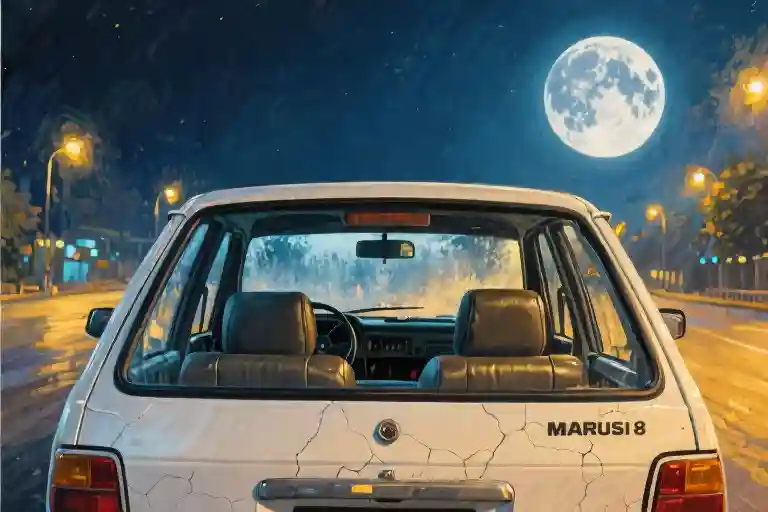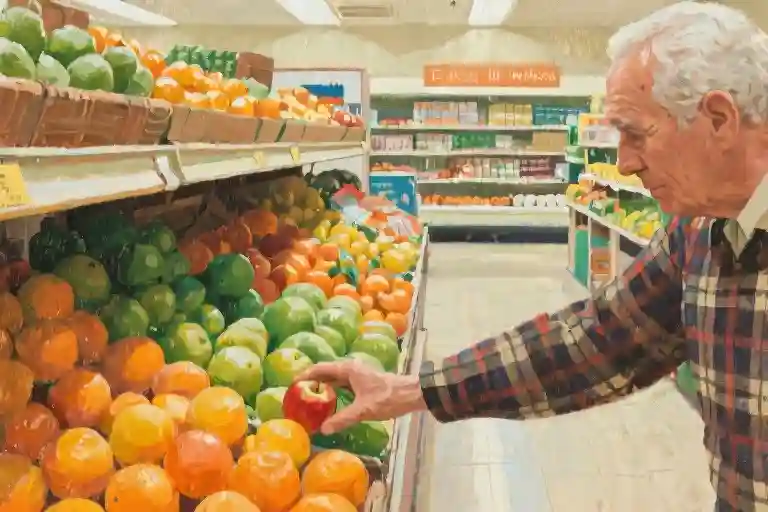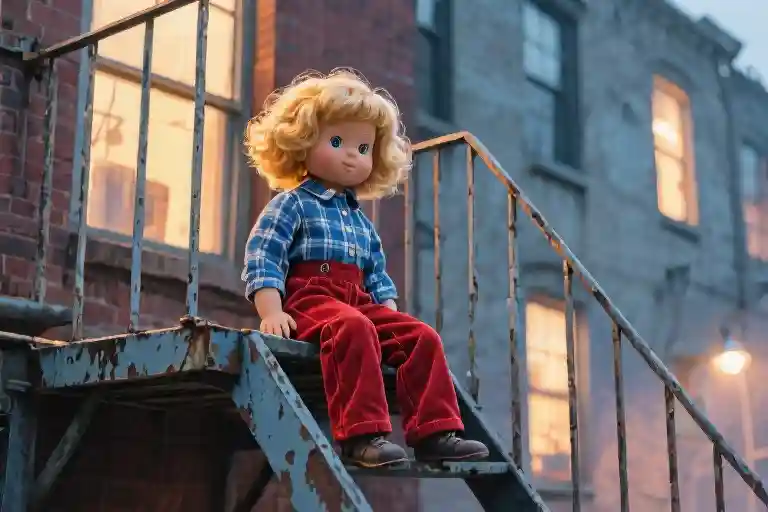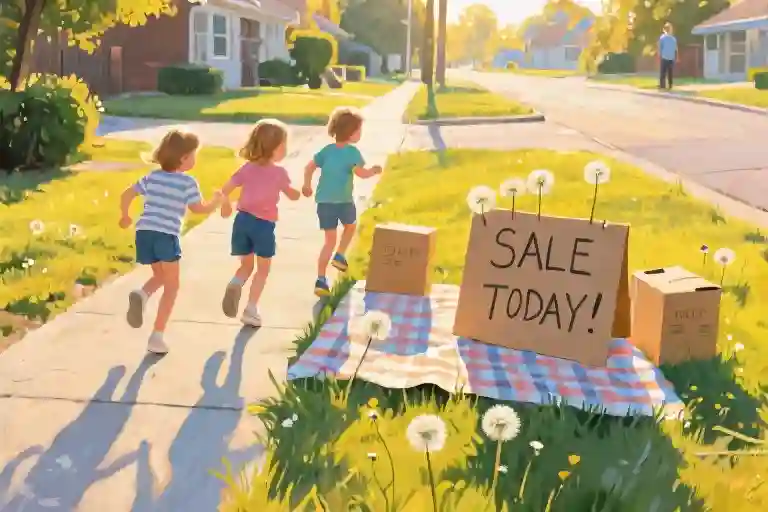When I was six, my sister leaned over the cracked vinyl seat of our old Maruti and whispered a secret that would shape my childhood: “The moon follows our car because it’s curious about us.” Her breath smelled of the mango candies we’d bought at the night market, sticky and sweet in the humid air.
Through the smudged rear window, I watched the moon—a perfect round coin suspended between tangled telephone wires—keeping pace with our sputtering car. The rhythmic click of turn signals blended with vendors calling prices for jackfruit and jasmine garlands as we drove home. Every bump in the road made the moon bounce playfully behind rooftops, just like my sister said it would.
Childhood imagination has a way of turning ordinary moments into magic. For months afterward, I developed rituals: pressing my palm against the cool glass when the moon appeared, counting how many lampposts it jumped behind, whispering greetings when no one was listening. My sister’s casual lie became my private science, more real than anything in our school textbooks.
What fascinates me now isn’t the naivety of believing a celestial body could care about our dented family car, but how completely children inhabit their fantasies. The night market smells—fried dough and exhaust fumes—still transport me to that backseat universe where physics bowed to wonder, where a sister’s words could make the cosmos feel intimate.
Our old Maruti is long gone, but sometimes when I see a child waving at the sky through a car window, I catch myself holding my breath. Not for the moon to respond, but for that fleeting age when every unanswered question leaves room for miracles.
The Birth of a Believer
My sister had a way of turning ordinary moments into magic. One humid evening, as our battered Maruti 800 rattled through the neon-lit night market, she tapped my shoulder and pointed to the back window. “Look,” she whispered, her voice dancing with conspiracy, “the moon wants to be our friend.”
At six years old, this made perfect sense. The moon had always been my silent companion during those late rides home – its pale face peeking between tangled telephone wires, ducking behind coconut trees, then reappearing like a shy playmate. But now I understood its true intention: it was following us. Not just moving across the sky, but specifically tracking our little white car with celestial curiosity.
From that night onward, our drives became secret adventures. I’d press my nose against the rear window, tracking the moon’s determined path – first hovering over Mr. Sharma’s rooftop, then slipping between the gaps of the new apartment complex, always keeping pace as we turned corners. My sister, thirteen and infinitely wiser, would narrate its journey: “It’s racing past the banyan tree now… oh! Almost got stuck behind the water tower!”
I developed rituals. Three precise waves when the moon first appeared. Careful documentation of its route in a notebook decorated with star stickers. Once, when clouds obscured our lunar follower, I nearly cried until my sister assured me it was just “playing hide-and-seek behind the monsoon.”
What strikes me now isn’t just the innocence of believing, but the complete sensory world that belief created. The way the moon’s glow would ripple through the rear windshield, casting liquid silver patterns on my sister’s profile. The smell of old vinyl seats mixing with the metallic tang of monsoon air as I rolled down the window to “help the moon see us better.” The satisfying click of my sandals against the door when I kicked my feet in excitement.
Children don’t just accept fantasies – they build entire ecosystems around them. My moon wasn’t some distant rock; it was a living character in our nightly travels, with preferences (it loved chasing us down Airport Road) and moods (sometimes it “moved slower when tired”). My sister, with her half-smiles and exaggerated warnings (“Don’t wave too fast or it’ll get dizzy!”), wasn’t lying to me. She was giving me the greatest gift of childhood: the space to wonder.
Those night rides became our private universe where physics bowed to imagination. While other commuters saw traffic and errands, we had a celestial game of tag spanning the city’s skyline. I often wonder if my sister remembers how carefully she tended that fragile magic – how she’d adjust her stories based on my observations (“Yes, I think it does look bigger near the temple!”) or invent challenges (“Bet you can’t count how many streets it follows us down!”).
Now I recognize this as something far more profound than sibling teasing. She was teaching me how to find stories in the mundane, to approach the world with softness and curiosity. The moon didn’t really follow our car, but her stories made me feel followed – seen – in a way that still lingers decades later when I catch moonlight on my rearview mirror and, just for a second, my hand twitches toward a forgotten wave.
The Shattering Moment of Truth
The classroom smelled of chalk dust and overheated children that afternoon when I raised my hand with evangelical fervor. At six years old, I was about to enlighten my first-grade science class about lunar behavior. “The moon follows our car because it’s curious,” I announced, still tasting the night market’s sugarcane juice on my tongue from yesterday’s ride home.
A beat of silence. Then the eruption.
Laughter ricocheted off the bulletin boards decorated with construction-paper planets. Not the kind giggles we shared during finger-painting mishaps, but the sharp, shoulder-shaking variety reserved for playground blunders. My fingers curled around the edges of my wooden desk, its scratched surface suddenly fascinating.
Mrs. Kapoor adjusted her glasses with that particular teacher-sigh I’d later recognize as the universal signal for “bless your heart.” In the gentlest possible demolition of childhood cosmology, she explained relative motion using our classroom’s lone ceiling fan. “See how the blades seem to follow your eyes when you look sideways? The moon does that too—it’s not moving, we are.”
The analogy should have comforted me. Instead, I remember focusing on how the fan’s chain pull swayed like a pendulum, counting the seconds until recess. My classmates’ muffled snickers layered over the fan’s whir, creating a dissonant soundtrack to my first scientific disillusionment. Someone whispered “baby” two rows back, the word carrying farther than intended in the post-laughter hush.
That afternoon, walking home past the same telephone wires where I’d charted the moon’s pursuit, everything looked different. The wires now formed a grid—no longer magical guidelines for celestial followers but mundane infrastructure. Even my shadow seemed less like a playmate and more like… well, just a shadow.
What fascinates me now isn’t the inaccuracy of my childhood belief, but its beautiful logic. Children’s science misconceptions—from thinking clouds are cotton candy to believing shadows can be outrun—follow impeccable imaginative reasoning. My six-year-old self had observed the moon’s apparent movement, noticed its persistence, and concluded agency. Isn’t that essentially the scientific method minus peer review?
Mrs. Kapoor wasn’t wrong to correct me, of course. But I sometimes wonder if there’s a midpoint between crushing a child’s magical thinking and leaving them unprepared for reality. Perhaps we could say, “You’re right—it does look like the moon’s following us! Let’s see why…” preserving the wonder while adding understanding. After all, even NASA describes spacecraft trajectories as “chasing” planetary alignments when explaining orbital mechanics to the public.
The memory still surfaces sometimes when I pass our old neighborhood. The telephone poles have been replaced with fiber-optic lines, the night market gentrified into a mall. But on certain evenings, when golden hour hits the windshield just right, I’ll catch myself glancing at the rearview mirror—not expecting to see a pursuing moon anymore, but remembering the version of me who did.
The Silent Accomplice
The moment I burst through our front door, my schoolbag still hanging from one shoulder, I could already hear the soft rustle of pages turning in the living room. My sister sat curled in her favorite corner of the sofa, a thick novel propped against her knees. The afternoon sunlight caught the edges of her hair, turning them golden, making her look like some serene goddess who’d never told a lie in her life.
‘You knew!’ My voice came out sharper than I’d intended, cracking with betrayal. ‘All this time, you knew the moon wasn’t really following us!’
The turning of a page was her only immediate response. The sound seemed absurdly loud in the quiet room – that crisp whisper of paper separating from paper. When she finally looked up, her expression held none of the mockery I’d feared, just a quiet resignation that somehow hurt worse.
‘I thought you’d figure it out,’ she said simply. Her fingers absently traced the edge of a candy wrapper she’d been using as a bookmark – the crinkled remains of some sweet we’d shared weeks ago. In that moment, the foil’s faint reflection dancing across the ceiling seemed more magical than any lunar illusion.
Her nonchalance stung like antiseptic on a scraped knee. I wanted to shake her, to make her understand how deeply I’d believed, how publicly I’d humiliated myself. But something about the way her thumb rubbed that worn candy wrapper stopped me. The gesture was unconsciously tender, a small bridge between the big sister who’d spun moon tales and this suddenly older version who seemed worlds away.
Later, I’d come to recognize that moment for what it was – not cruelty, but a kind of reluctant initiation. My sister, barely thirteen herself, had been passing along the same gentle deception older siblings have offered since time immemorial: the gift of wonder, however temporary. That candy wrapper bookmark, preserved between chapters of some grown-up novel, was proof she hadn’t always been so pragmatic.
When she returned to her reading, I didn’t storm off as planned. Instead, I climbed onto the sofa beside her, resting my head against her shoulder the way I hadn’t in months. She didn’t comment, just shifted slightly to make room. Outside our window, the early evening sky began its daily transformation, neither chasing nor fleeing, simply being – as celestial bodies and older sisters do.
Moonlight Reflections: When Childhood Echoes in Adulthood
Years later, I finally understood my sister’s lunar deception for what it truly was – not a cruel prank, but what psychologists might call “emotional timekeeping.” That moment when she shrugged off my heartbroken accusation became clearer through the rearview mirror of adulthood. She wasn’t dismissing my feelings; she was performing the oldest sibling ritual of all: letting me down gently before the world could do it harshly.
This realization crystallized one ordinary evening when I found myself driving my seven-year-old daughter home from soccer practice. As we turned onto Maple Avenue, her sudden gasp made me brake instinctively. “Daddy!” she cried, pressing both hands against the moonroof, “The moon’s chasing us!” Her delighted squeal transported me instantly back to that battered Maruti’s vinyl backseat. The streetlights blurred as decades collapsed between us.
Modern parenting guides would probably suggest I seize this “teachable moment” – explain celestial mechanics with age-appropriate metaphors about cosmic billiard balls. But the words that actually left my mouth surprised even me: “Maybe it wants to tell you a secret.” My daughter’s eyes widened exactly as mine must have decades earlier, that magical suspension of disbelief children wear like a second skin.
This generational echo reveals the dual nature of childhood imagination. As adults, we recognize these moments as cognitive milestones – what Piaget called the “intuitive phase” where children struggle with abstract concepts. But through children’s eyes? Pure poetry in motion. The moon becomes a celestial playmate, clouds transform into cotton candy factories, and shadows morph into shape-shifting companions. These aren’t misconceptions to be corrected, but wonderments to be treasured.
Research from Cornell’s Childhood Cognition Project confirms what my sister instinctively knew: children who retain elements of magical thinking into middle childhood often develop stronger narrative reasoning skills. That “moon phase” of imagination serves as mental training wheels for more complex abstract thinking later. My sister’s white lie wasn’t stunting my intellectual growth – it was giving my childhood imagination room to breathe during those precious years when reality still held elastic edges.
Now when I catch myself automatically checking the rearview mirror for our lunar follower, I no longer feel foolish. That reflex represents something far more valuable than astronomical accuracy – it’s the lingering heartbeat of childhood curiosity that still thrums beneath my adult pragmatism. My daughter will inevitably learn the scientific truth about relative motion (probably from some YouTube astronaut), but she’ll also remember that her father once spoke to her in the secret language of wonder.
Perhaps this is why sibling relationships become more precious with time. They’re the only ones who remember us before the world sanded down our edges, who can testify that we too once believed in moon magic and monster-repelling nightlights. My sister didn’t just give me a childhood myth – she gave me a shared emotional coordinates that still help me navigate adulthood’s complexities.
So tonight, when you notice the moon keeping pace with your car, try something radical: roll down the window and wave. Not because you believe in celestial stalkers, but because somewhere inside you still lives that wide-eyed version of yourself who did. And if you’re very lucky, you might hear an echo of your sister’s voice saying, “See? I told you it was curious.”
When the Moon Stopped Following Me
Now I know the moon doesn’t follow anyone – not cars, not children, not even hopeful dreamers waving through dusty rear windows. That luminous companion who once drifted between telephone wires and coconut trees was never really trailing our old Maruti after all. The laws of physics, my science teacher explained with gentle finality, don’t accommodate such celestial curiosities.
Yet decades later, driving home through violet twilight with my own daughter in the backseat, I still catch myself glancing at the rearview mirror when she suddenly asks, “Daddy, why is the moon chasing us?” The question hangs between us like a soap bubble – fragile, iridescent, and too precious to pop with cold facts. In that suspended moment, I see three reflections: her wide-eyed wonder, my own hesitant smile, and the ghost of a thirteen-year-old girl in the passenger seat pretending to read a book.
Childhood imagination has a peculiar gravity. Like lunar tides, it pulls at the edges of our adult rationality, leaving behind emotional debris we spend years sorting through. What my sister gave me wasn’t deception but a temporary universe where moons could choose their traveling companions, where science teachers didn’t exist, and where an older sibling’s words held the power to reshape reality. That universe collapsed, as all childhood universes must, but its afterglow lingers in unexpected places.
Sometimes at parent-teacher conferences, when educators discuss “correcting childhood misconceptions,” I watch the moon through classroom windows and wonder about the cost of cosmic truth. We gain the solar system’s mechanics but lose its magic; we map craters with satellite precision but forget how to see the Man in the Moon’s smile. My daughter will learn about relative motion soon enough – but tonight, just for the drive home, I roll down her window and say, “Wave hello and see if it waves back.”
Because growing up isn’t about choosing between facts and fantasy, but understanding when to let each speak. The moon outside my office window tonight is the same celestial body that “followed” our car in 1993 – same diameter, same orbit, same reflectivity. Yet it’s also entirely different, filtered through layers of parking lot fluorescents and spreadsheet deadlines. The wonder isn’t gone, just transformed, like sunlight becoming moonlight.
So I keep two moons now: one that obeys Newton’s laws, and one that chases a rusting Maruti through monsoon-slick streets. The first helps me navigate; the second reminds me why I wanted to journey anywhere at all. And when my daughter outgrows her chasing moon, I’ll tell her about the backseat astronomer who once believed in lunar friendship – not to embarrass her, but to show how even outgrown truths leave permanent marks, like moonlight on water.





